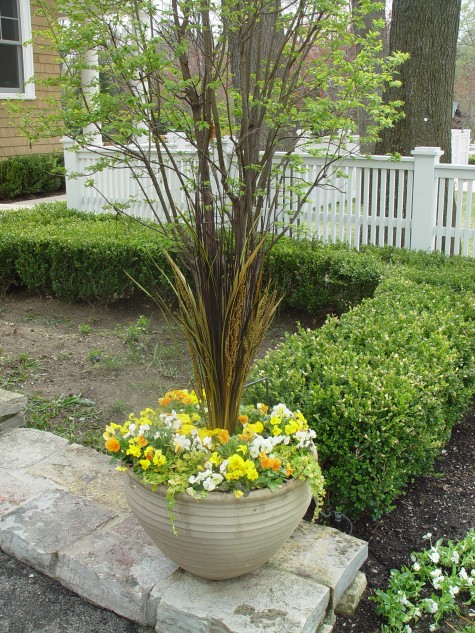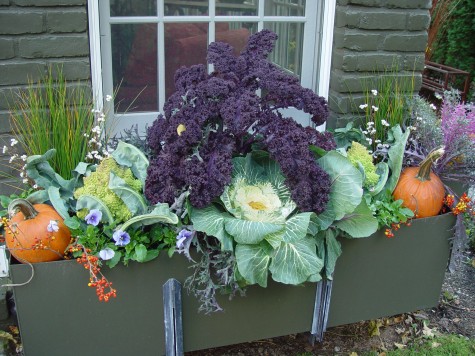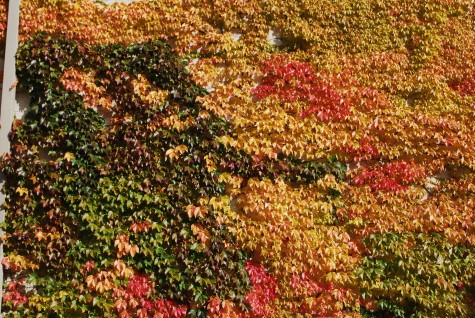 I have never forgotten my ninth grade science teacher, Dr. Watson. He concluded every lecture or discussion with the statement, “And that is the beauty of science”. Though at the time I thought he was a crackpot, I now know he was absolutely right. Today I am thinking about Parthenocissus Tricuspidata; Boston Ivy is an ordinary plant with a fancy scientific name whose primary claim to fame is its ability to grip to and cover walls with dense sheets of leaves. Why today? The fall color of Boston Ivy is one of nature’s most spectacularly glowing moments, ranking right up there with the aurora borealis.
I have never forgotten my ninth grade science teacher, Dr. Watson. He concluded every lecture or discussion with the statement, “And that is the beauty of science”. Though at the time I thought he was a crackpot, I now know he was absolutely right. Today I am thinking about Parthenocissus Tricuspidata; Boston Ivy is an ordinary plant with a fancy scientific name whose primary claim to fame is its ability to grip to and cover walls with dense sheets of leaves. Why today? The fall color of Boston Ivy is one of nature’s most spectacularly glowing moments, ranking right up there with the aurora borealis.
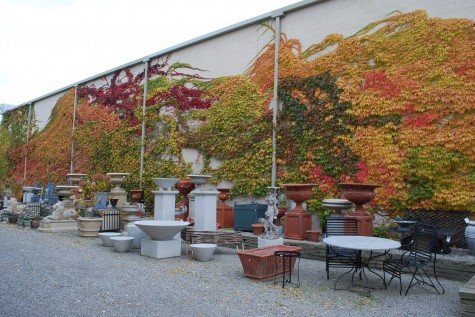 One wall of the building next door to me sits right on my property line; that would be just about two thousand square feet of beige concrete block. Needless to say, I was not too crazy about the look. Five Boston Ivy plants have just about transformed that wall in four years time; today it is looking exceptionally good. The science behind all this color-the formation of the abcission layer. Don’t black out; I’m talking about the beauty of science here. As soon as the nights get long enough in the fall, the cells that connect the leaves to the stems begin to rapidly divide-but they do not expand. This produces a brittle callus, which slows, and finally prevents the flow of nutrients from the stem to the leaves. The plant is going dormant, and putting any expenditure of energy on hold. This is a survival mechanism, the instinct to preserve life, and the beauty of science.
One wall of the building next door to me sits right on my property line; that would be just about two thousand square feet of beige concrete block. Needless to say, I was not too crazy about the look. Five Boston Ivy plants have just about transformed that wall in four years time; today it is looking exceptionally good. The science behind all this color-the formation of the abcission layer. Don’t black out; I’m talking about the beauty of science here. As soon as the nights get long enough in the fall, the cells that connect the leaves to the stems begin to rapidly divide-but they do not expand. This produces a brittle callus, which slows, and finally prevents the flow of nutrients from the stem to the leaves. The plant is going dormant, and putting any expenditure of energy on hold. This is a survival mechanism, the instinct to preserve life, and the beauty of science.
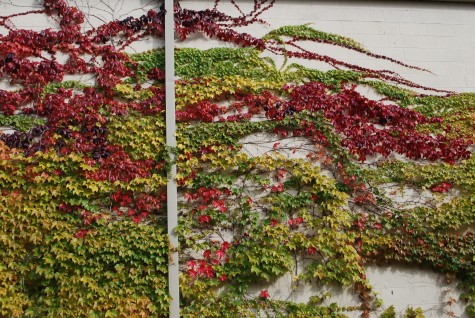 At the same time, the leaves slow down and eventually quit producing chlorophyll-that chemical that makes leaves green. If chlorophyll is not constantly manufactured in a leaf, the leaf will fade in sunlight. Chlorophyll masks the other pigments existing in leaves; the yellows, oranges and reds that were there all along are revealed when the production of chlorophyll ceases.
At the same time, the leaves slow down and eventually quit producing chlorophyll-that chemical that makes leaves green. If chlorophyll is not constantly manufactured in a leaf, the leaf will fade in sunlight. Chlorophyll masks the other pigments existing in leaves; the yellows, oranges and reds that were there all along are revealed when the production of chlorophyll ceases.
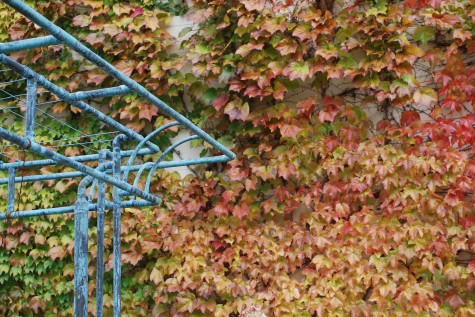 Though day length triggers this process, the temperatures, the moisture in the soil, and sunlight influence the overall show. A dry growing season can encourage leaves to drop early before they reveal any color. High winds can sever the dry corky abscission layer with the same result. At any rate, the variation and intensity of color on this wall is different every year given weather conditions. I can see that light, water, wind, sun and overnight temperatures affect the leaves on wall at different rates.
Though day length triggers this process, the temperatures, the moisture in the soil, and sunlight influence the overall show. A dry growing season can encourage leaves to drop early before they reveal any color. High winds can sever the dry corky abscission layer with the same result. At any rate, the variation and intensity of color on this wall is different every year given weather conditions. I can see that light, water, wind, sun and overnight temperatures affect the leaves on wall at different rates.
 It is easy to see the chlorophyll fading at different rates in different leaves-the color variation within each individual leaf is beautiful.
It is easy to see the chlorophyll fading at different rates in different leaves-the color variation within each individual leaf is beautiful.
 Anthocyanins are responsible for the red and purple pigments in leaves. They are manufactured from sugars that are trapped in the leaf. Oddly enough, these pigments are not present in leaves during the growing season. The role of these pigments is not so well understood. If you are interested in reading more about it, The United States National Arboretum has an excellent article on line about the science of color in autumn leaves.
Anthocyanins are responsible for the red and purple pigments in leaves. They are manufactured from sugars that are trapped in the leaf. Oddly enough, these pigments are not present in leaves during the growing season. The role of these pigments is not so well understood. If you are interested in reading more about it, The United States National Arboretum has an excellent article on line about the science of color in autumn leaves.
 Metasequoia Glyptostroboides-I wish this were my name. The Dawn Redwood is an ancient evergreen tree with a twist; it drops its needles in the fall, after turning this glorious peachy orange. This deciduous evergreen is an anomaly amongst evergreens, which ordinarily hold their foliage all winter.
Metasequoia Glyptostroboides-I wish this were my name. The Dawn Redwood is an ancient evergreen tree with a twist; it drops its needles in the fall, after turning this glorious peachy orange. This deciduous evergreen is an anomaly amongst evergreens, which ordinarily hold their foliage all winter.

The brilliant colors of fall leaves holds but a very short time. These pigments break down when exposed to light, or heavy frost. The brown color you see in these leaves is a result of the only pigment left-the tannins. The story of parthenocissus is not only about the beauty of science. It is just as much the story of the miracle that is nature.
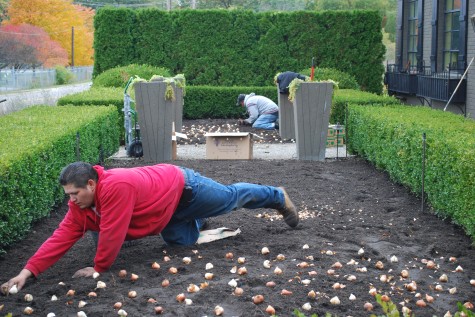
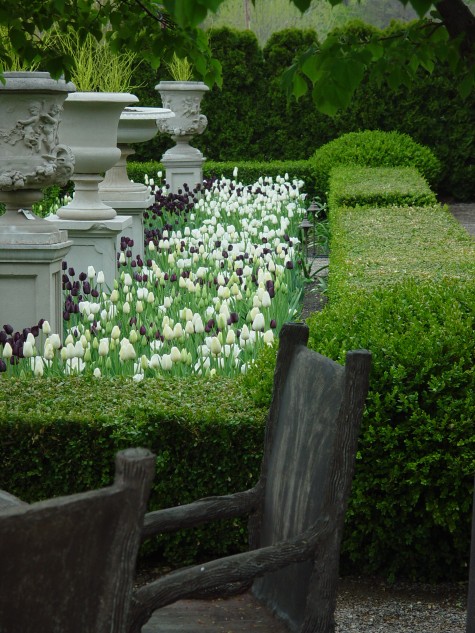 They say delayed gratification is the most adult of all pleasures, so maybe I was being childish about the long hiatus between the planting and the blooming. But when spring finally comes, tulips deliver. It is no small miracle that those small white bulbs with their papery brown covers become a plant that can reach thirty inches tall or better, with strikingly large flowers. Even people whose vocabulary does not include the word “garden”, know the word tulip.
They say delayed gratification is the most adult of all pleasures, so maybe I was being childish about the long hiatus between the planting and the blooming. But when spring finally comes, tulips deliver. It is no small miracle that those small white bulbs with their papery brown covers become a plant that can reach thirty inches tall or better, with strikingly large flowers. Even people whose vocabulary does not include the word “garden”, know the word tulip. 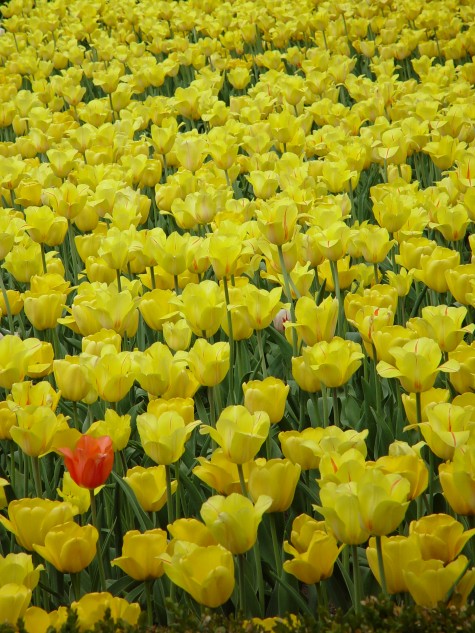 As is my habit, I welcome the one odd plant out in any mass planting. This ocean of Mrs. John Sheepers is all the better looking for it. The blooming of the tulips is one of those garden moments to be treasured. I certainly was not thinking about how cold it was the day I planted , on this spring day. My tulips shake off any late frost; most of any damage is to the leaves that appear early. They are remarkably resilient to rain and wind.
As is my habit, I welcome the one odd plant out in any mass planting. This ocean of Mrs. John Sheepers is all the better looking for it. The blooming of the tulips is one of those garden moments to be treasured. I certainly was not thinking about how cold it was the day I planted , on this spring day. My tulips shake off any late frost; most of any damage is to the leaves that appear early. They are remarkably resilient to rain and wind.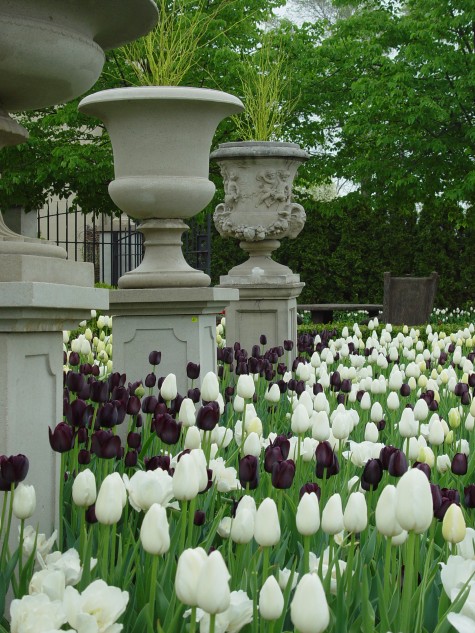 Despite some literature to the contrary, I would not describe a tulip as a perennial. Once they flower, the top size bulb breaks down into smaller bulbs and bulbils. As flower size is directly related to the size of the bulb, a smaller bulb, or collection of will produce smaller flowers, or possibly, no flowers at all. In Holland, once the tulips have bloomed, the bulbs are dug up, sorted as to size and replanted for growing them back to top size. I do not want to dig tulips, separate the bulbs and replant; the Dutch do a much better job of this than I could. This is a long way of saying that I treat my tulips as annuals. When they are done flowering, I dig them and give them away, or compost them.
Despite some literature to the contrary, I would not describe a tulip as a perennial. Once they flower, the top size bulb breaks down into smaller bulbs and bulbils. As flower size is directly related to the size of the bulb, a smaller bulb, or collection of will produce smaller flowers, or possibly, no flowers at all. In Holland, once the tulips have bloomed, the bulbs are dug up, sorted as to size and replanted for growing them back to top size. I do not want to dig tulips, separate the bulbs and replant; the Dutch do a much better job of this than I could. This is a long way of saying that I treat my tulips as annuals. When they are done flowering, I dig them and give them away, or compost them.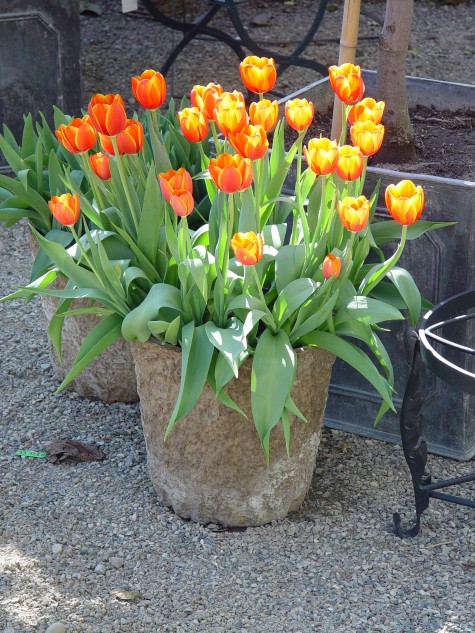 Daffodils are a much better choice of a spring flowering bulb, should you have a requirement that your bulbs rebloom reliably. But they are not tulips. Treating the tulips as annuals permits me to plant them in places where I will later plant summer annuals. As I do not discriminate against summer flowering plants that are only able to grace my garden for one year, so why not have tulips?
Daffodils are a much better choice of a spring flowering bulb, should you have a requirement that your bulbs rebloom reliably. But they are not tulips. Treating the tulips as annuals permits me to plant them in places where I will later plant summer annuals. As I do not discriminate against summer flowering plants that are only able to grace my garden for one year, so why not have tulips?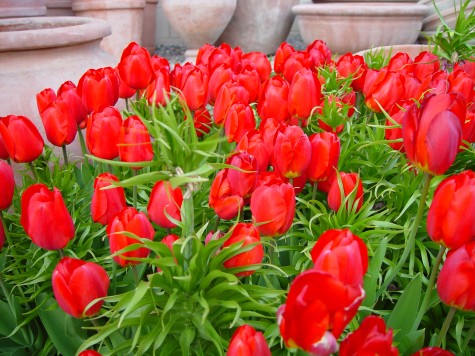
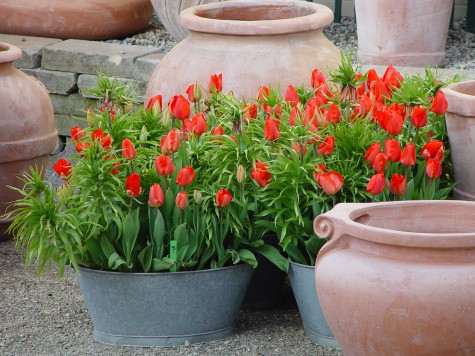

 Given that I took this picture September 24, why wouldn’t I be unprepared for the weather here this past week? Just three weeks ago, I still had my summer. Though describing any Michigan weather as “ordinary” is glossing over the truth, our weather ordinarily cools off at a slow enough pace to make keeping up with the job of putting the garden to sleep relatively easy. My fall cleanup and shovelling out is based on the distinction I draw between gardening, and housekeeping.
Given that I took this picture September 24, why wouldn’t I be unprepared for the weather here this past week? Just three weeks ago, I still had my summer. Though describing any Michigan weather as “ordinary” is glossing over the truth, our weather ordinarily cools off at a slow enough pace to make keeping up with the job of putting the garden to sleep relatively easy. My fall cleanup and shovelling out is based on the distinction I draw between gardening, and housekeeping.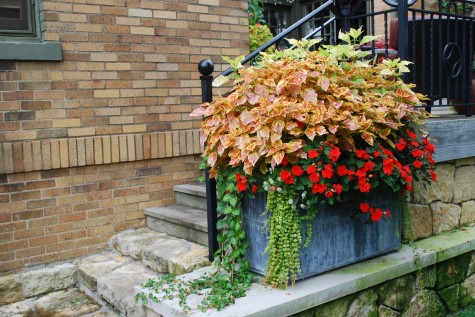 I have seen those properties that look as though every shred of organic debris has been blown, vacuumed up and disposed of weekly; anyone who has inadvertently turned a blower on themselves realize what an invasion they are. Every green leaf looks dusted; every surface has been swept, every shred or organic debris is bagged and removed. The stone is scrubbed clean, and the cushions are only on the furniture when company is in attendance. I like the look of cultivated soil as well as the next person, but all of the above is housekeeping, not gardening. Years ago a gardener whom I greatly respect, Marge Alpern, told me she disturbed her plants as little as possible. She maintained that plants can be worried such that they refuse to prosper. I think this is a point well taken. I will not take on the perennial gardens until much later in the fall.
I have seen those properties that look as though every shred of organic debris has been blown, vacuumed up and disposed of weekly; anyone who has inadvertently turned a blower on themselves realize what an invasion they are. Every green leaf looks dusted; every surface has been swept, every shred or organic debris is bagged and removed. The stone is scrubbed clean, and the cushions are only on the furniture when company is in attendance. I like the look of cultivated soil as well as the next person, but all of the above is housekeeping, not gardening. Years ago a gardener whom I greatly respect, Marge Alpern, told me she disturbed her plants as little as possible. She maintained that plants can be worried such that they refuse to prosper. I think this is a point well taken. I will not take on the perennial gardens until much later in the fall. A series of nights with temperatures hovering in the mid thirties left my pots looking like this-devastated. It does not matter one bit that I know this day is coming, I am never ready for it, nor do I like it. I do not like to let go. On a much more dramatic scale than the time changing to daylight savings, I adjust slowly, and poorly.
A series of nights with temperatures hovering in the mid thirties left my pots looking like this-devastated. It does not matter one bit that I know this day is coming, I am never ready for it, nor do I like it. I do not like to let go. On a much more dramatic scale than the time changing to daylight savings, I adjust slowly, and poorly.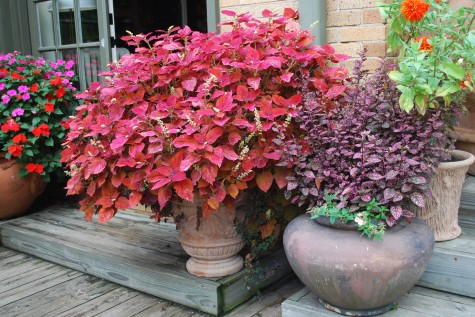 Coleus are astonishingly intolerant of cold weather. Anyone who does poorly with them is probably planting them out too early; every plant thrives in some conditions, and sulks in all else. This five foot diameter fiery orange ball was glorious all season; in late August the corgis were breaking off the branches encroaching on the doorway. They keep the extreme understory clear of any obstructions.
Coleus are astonishingly intolerant of cold weather. Anyone who does poorly with them is probably planting them out too early; every plant thrives in some conditions, and sulks in all else. This five foot diameter fiery orange ball was glorious all season; in late August the corgis were breaking off the branches encroaching on the doorway. They keep the extreme understory clear of any obstructions.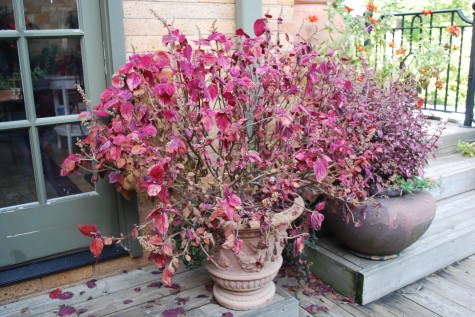 In what seemed like the blink of an eye my fireball shed almost every leaf. Unlike the gingko tree which sheds every leaf on that certain perfect fall day, leaving a beautiful pool of yellow on the ground, the coleus leaves dessicate, drop, and disappear before you can even mourn properly.
In what seemed like the blink of an eye my fireball shed almost every leaf. Unlike the gingko tree which sheds every leaf on that certain perfect fall day, leaving a beautiful pool of yellow on the ground, the coleus leaves dessicate, drop, and disappear before you can even mourn properly. 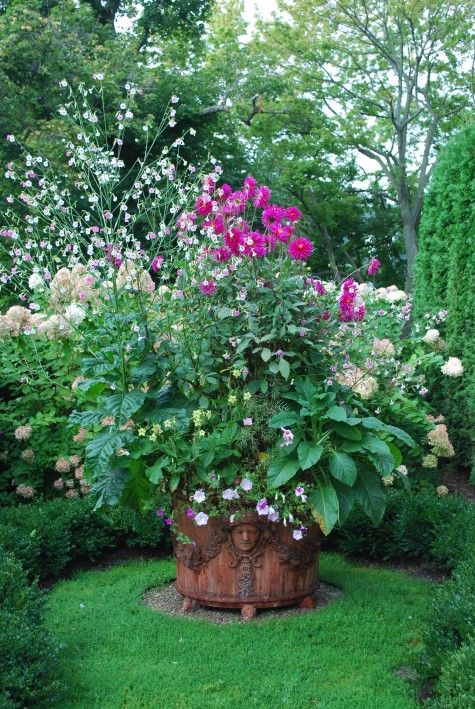 My English-made Italian style pots were home to the biggest bouquet I have ever grown. The nicotiana mutabilis got busy throwing spikes in September, and the dahlias were blooming profusely. I like that extravagant and exuberant look. No matter how the day had gone, I could go home and congratulate myself on having grown one of the annual wonders of the western world. You may be laughing, but how the look of it pleased and cheered me.
My English-made Italian style pots were home to the biggest bouquet I have ever grown. The nicotiana mutabilis got busy throwing spikes in September, and the dahlias were blooming profusely. I like that extravagant and exuberant look. No matter how the day had gone, I could go home and congratulate myself on having grown one of the annual wonders of the western world. You may be laughing, but how the look of it pleased and cheered me. 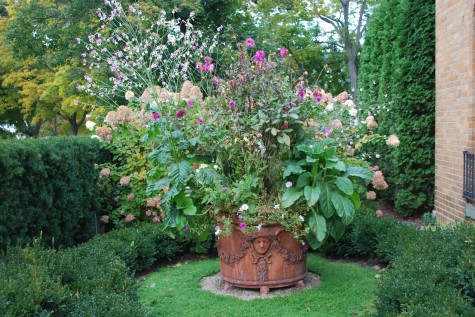 Though the nicotiana mutabilis is yet bravely defending its home, the cold pierced the heart of the whole. Buck is always amazed and amused and the depth and breadth of the despair which attends the beginning of the end of my gardening year. I alternately rage and whine-he murmurs, and pours the wine.
Though the nicotiana mutabilis is yet bravely defending its home, the cold pierced the heart of the whole. Buck is always amazed and amused and the depth and breadth of the despair which attends the beginning of the end of my gardening year. I alternately rage and whine-he murmurs, and pours the wine.  This sister to my pots, adapted for use as a fountain, bears all the signs of a season’s worth of mineral laden water, weather,heat and growth. Does that gorgeous Italianate face not seem completely grief stricken?
This sister to my pots, adapted for use as a fountain, bears all the signs of a season’s worth of mineral laden water, weather,heat and growth. Does that gorgeous Italianate face not seem completely grief stricken? 

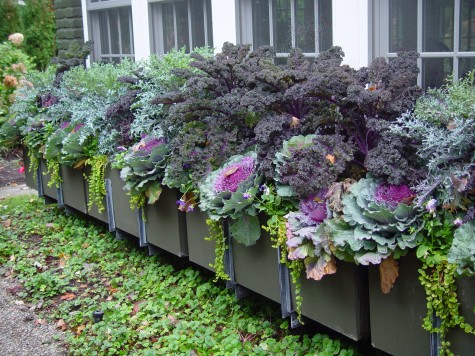 Window boxes of size permit expression of size. These boxes are viewed primarily from a garden room indoors, so big and striking, and not too tall, is the order of the day. As they face the south, and are somewhat protected from freezing winds and cold temperatures, these boxes prosper late into the fall season and through Thanksgiving.
Window boxes of size permit expression of size. These boxes are viewed primarily from a garden room indoors, so big and striking, and not too tall, is the order of the day. As they face the south, and are somewhat protected from freezing winds and cold temperatures, these boxes prosper late into the fall season and through Thanksgiving. Whomever it was who invented stick stacks, I thank them. These 6 foot stacks comprised of wood cut into quarter inch by quarter inch squares are uniformly vertical when they go in a pot. A piece of steel rebar is driven deep into the pots, and the stack wired to it. This keeps the centerpiece from tilting. Funny how an element askew has that air of neglect about it. I like to see people keeping up the appearance of their homes from the street. Stick stacks change in appearance with exposure to weather. As the wood absorbs moisture from the air, they curve away from the center in a very graceful way. The preserved green eucalyptus weathers just about anything.
Whomever it was who invented stick stacks, I thank them. These 6 foot stacks comprised of wood cut into quarter inch by quarter inch squares are uniformly vertical when they go in a pot. A piece of steel rebar is driven deep into the pots, and the stack wired to it. This keeps the centerpiece from tilting. Funny how an element askew has that air of neglect about it. I like to see people keeping up the appearance of their homes from the street. Stick stacks change in appearance with exposure to weather. As the wood absorbs moisture from the air, they curve away from the center in a very graceful way. The preserved green eucalyptus weathers just about anything. Tender is a fabulous dress shop that is known for its cutting edge fashion. Their fall pots are dressy. Maple leaves coated in copper shine, as do the pumpkins with a dusting of gold. Integrifolia dyed an intense shade of fall orange compliment the dyed pencil thin willow sticks. Orange and white pansies complete the ensemble.
Tender is a fabulous dress shop that is known for its cutting edge fashion. Their fall pots are dressy. Maple leaves coated in copper shine, as do the pumpkins with a dusting of gold. Integrifolia dyed an intense shade of fall orange compliment the dyed pencil thin willow sticks. Orange and white pansies complete the ensemble.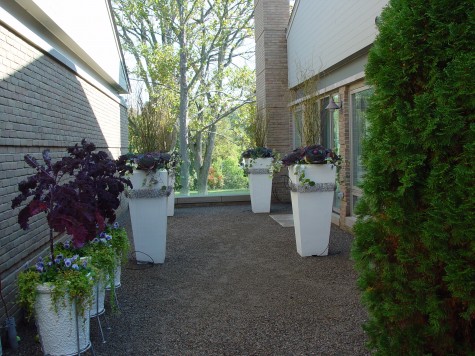 This narrow courtyard, part of a condominium, is organized around four very large white concrete pots inlaid with bands of curved stainless steel wire. Fiber pots painted white in galvanized steel stands are home to my client’s tomato plants in the summer; the tall kale, pansies, and creeping jenny compliment the cabbages and ivy in the concrete pots in both form and feeling.
This narrow courtyard, part of a condominium, is organized around four very large white concrete pots inlaid with bands of curved stainless steel wire. Fiber pots painted white in galvanized steel stands are home to my client’s tomato plants in the summer; the tall kale, pansies, and creeping jenny compliment the cabbages and ivy in the concrete pots in both form and feeling. 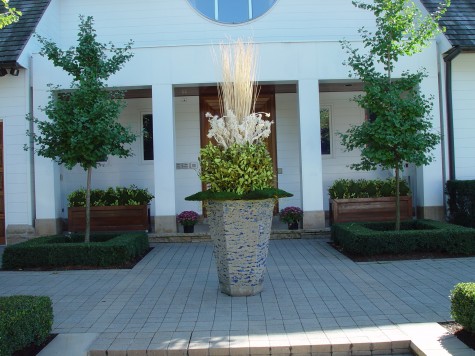 Lime integrifolia and diamond shaped moss pillows help create a clean and more modern look; not every client is enamoured of pumpkins and the like. Bleached sticks and pods complete the look.
Lime integrifolia and diamond shaped moss pillows help create a clean and more modern look; not every client is enamoured of pumpkins and the like. Bleached sticks and pods complete the look.